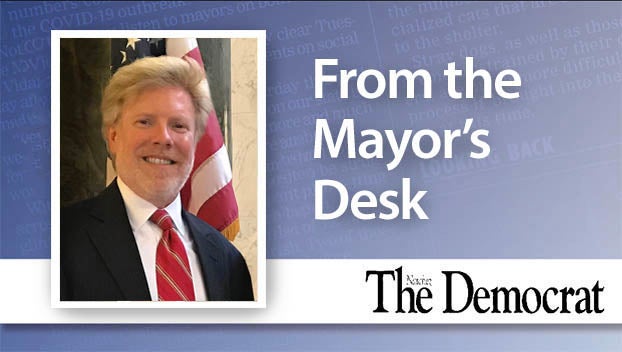A tale of two presidents of warring states
Published 12:01 am Wednesday, June 13, 2018
In June 1808, Samuel and Jane Davis’ son Jefferson was born near Hopkinsville, Kentucky.
Only eight months later, in February 1809, and about a hundred miles east near Hodgenville, Thomas and Nancy Lincoln’s son Abraham was born. Both families were Baptists. Both fathers came from Revolutionary-era patriot stock. Both had been born in the South. Both were small farmers with ambitions. To an uncanny degree, their boys, Jeff and Abe, were twin strangers, even into adulthood when each would become president. Even their terms of office almost exactly mirrored one another, from February-March 1861 to April 1865. And each of those tenures would be completely consumed by war.
Though, war against each other.
Because, of course, Tom’s son Abraham would become president of the United States; Sam’s son Jefferson of the Dis-United States, aka, the Confederacy.
Abe in Washington, Jeff in Richmond — about 100 miles apart. And these parallel, then colliding life courses had been set by their fathers. Because the two similarly patriotic, Baptist, farmer patriarchs had profoundly dissimilar notions of what patriotism, Christianity, and economic opportunity meant.
Tom Lincoln was, as his son Abe would later put it, “naturally anti-slavery.” In part, that was because he was a Baptist. Many 17th and 18th century evangelical Protestants — even those exploding in numbers across the South — had condemned slavery as fundamentally contrary to their ideal of Christian equality.
Despite this tradition, however, the Baptist Sam Davis was “unnaturally” pro-slavery. His material ambitions depended upon cotton and slaves, so he gave his old-time-religion some modern times modifications. Rather than embracing the faith of his fathers, he repudiated it. He moved his family to Mississippi, where he enjoyed modest success as a slaveholding planter. His son Jefferson, though, would rise to be a member of the slaveholding elite.
But Tom Lincoln’s version of the American Dream was very different. Slavery, he thought, was an obstacle to, not a means to, economic success for the non-slaveholding white majority.
He was convinced that most white men — honest, pious, and hard-working independent farmers like himself — would never be given a fair shake in a political and economic system inevitably rigged in favor of wealthy slaveholders. Believing the institution of slavery to be not only un-Christian, but un-democratic and hostile to his own economic interests, he migrated north of the Ohio River where slavery was banned — a place that represented his freedom and opportunity as surely as it did for a runaway slave.
Tom was not alone in this judgment. Throughout the antebellum decades, white migration from slave to free states was three times higher than from free to slave. Over the same span, seven out of eight Europeans who came to this country went to the North, not the South. The reason was the dead hand of slavery. A dead hand, that is, for all except the slaveholding minority who prospered.
British historian Robin Blackburn calls this “egotistical anti-slavery” to distinguish it from the “altruistic anti-slavery” of the abolitionists. We shouldn’t discount the moral fervor and importance of those abolitionists, but it is this self-interested opposition to slavery that prevailed in the North. This self-interested analysis is why most northerners wanted slavery kept out of the North, but, also, out of the western territories where they, or their children, might move one day.
And when Southern slaveholders, like Sam Davis’s son Jeff, insisted that slavery had to expand into the territories to survive, these Northern “Free Soilers,” like Tom Lincoln’s son Abe, refused to compromise.
Here is the crux of the great divide that led to secession and war.
JIM WIGGINS is a retired Copiah-Lincoln Community College history instructor.





